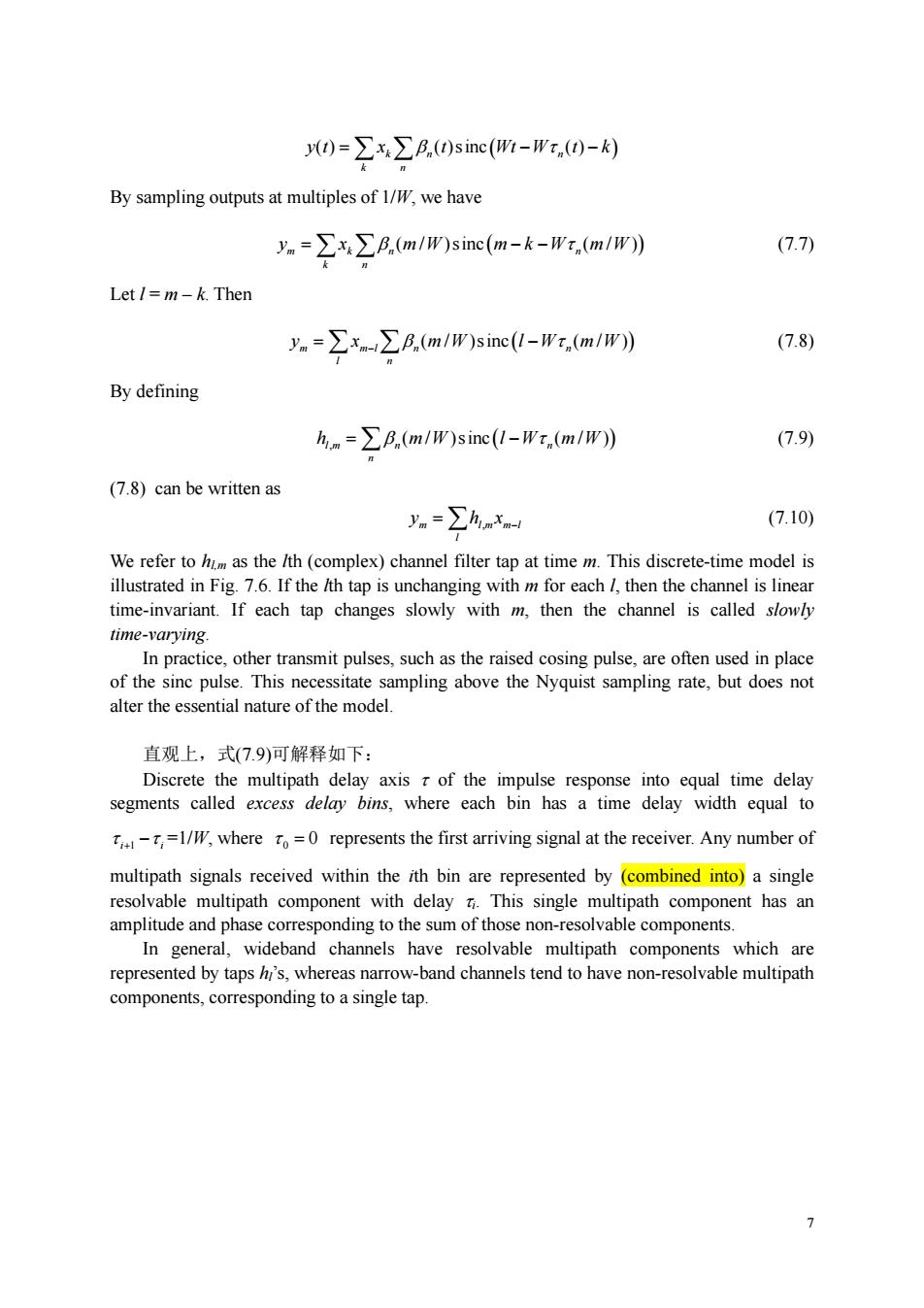正在加载图片...

0=∑x∑B.(0sinc(W1-Wx()-k) By sampling outputs at multiples of 1/W,we have y=∑x∑B(m/W)sinc(m-k-Wx.(m/W) (7.7) Let/=m-k.Then y.=∑x-∑B,(m/W)sinc(-Wr,(m/W) (7.8) By defining h=B.(m/W)sinc(1-Wi(m/W)) (7.9) (7.8)can be written as yn=∑hnx (7.10) We refer tohm as the /th(complex)channel filter tap at time m.This discrete-time model is illustrated in Fig.7.6.If the th tap is unchanging with m for each /then the channel is linear time-invariant.If each tap changes slowly with m,then the channel is called slowly time-varying. In practice.other transmit pulses.such as the raised cosing pulse.are often used in place of the sinc pulse.This ne ate mpling above the Nyquist sampling rate,but does not alter the essential nature of the model. 直观上,式(7.9)可解释如下: Discrete the multipath delay axis r of the impulse response into equal time delay segments called excess delay bins,where each b in has a time delay width equal to ,=1/,where0represents the first arriving signal at the receiver.Any number of multipath signals received within the ith bin are represented by (combined into)a single resolvable multipath component with delay This single multipath component has an amplitude and phase corresponding to the sum of those non-resolvable components. In ge eral. widehand channels esolvable multipath components whichr represented by taps h's,whereas narrow-band channels tend to have non-resolvable multipath components,corresponding to a single tap. 7 7 ( ) ( )sinc ( ) kn n k n y t x t Wt W t k By sampling outputs at multiples of 1/W, we have m kn n ( / )sinc ( / ) k n y x mW m k W mW (7.7) Let l = m – k. Then m ml n n ( / )sinc ( / ) l n y x mW l W mW (7.8) By defining , ( / )sinc ( / ) lm n n n h mW l W mW (7.9) (7.8) can be written as m lm m l , l y h x (7.10) We refer to hl,m as the lth (complex) channel filter tap at time m. This discrete-time model is illustrated in Fig. 7.6. If the lth tap is unchanging with m for each l, then the channel is linear time-invariant. If each tap changes slowly with m, then the channel is called slowly time-varying. In practice, other transmit pulses, such as the raised cosing pulse, are often used in place of the sinc pulse. This necessitate sampling above the Nyquist sampling rate, but does not alter the essential nature of the model. 直观上,式(7.9)可解释如下: Discrete the multipath delay axis of the impulse response into equal time delay segments called excess delay bins, where each bin has a time delay width equal to i i 1 =1/W, where 0 0 represents the first arriving signal at the receiver. Any number of multipath signals received within the ith bin are represented by (combined into) a single resolvable multipath component with delay i. This single multipath component has an amplitude and phase corresponding to the sum of those non-resolvable components. In general, wideband channels have resolvable multipath components which are represented by taps hl’s, whereas narrow-band channels tend to have non-resolvable multipath components, corresponding to a single tap